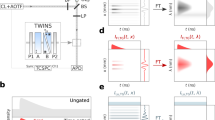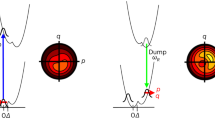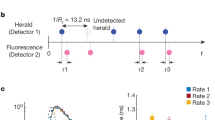Abstract
RECTANGULAR-WAVE cathodo-excitation of short-persistence phosphors is known1 to produce curves of intensity of luminescence of the shape indicated in Fig. 1, the sections of rise and decay each being represented by the sum of two characteristic exponential functions. These may be expressed, with the notation of Fig. 1, for the rise by:  and for the decay, provided that the steady-state condition L
e has virtually been attained at t < t
p, by :
and for the decay, provided that the steady-state condition L
e has virtually been attained at t < t
p, by :  where k
r1 + k
r2 = k
d1 + k
d2 = 1, and τr2 ≪ τr1, τd2 ≪ τd1.
where k
r1 + k
r2 = k
d1 + k
d2 = 1, and τr2 ≪ τr1, τd2 ≪ τd1.
This is a preview of subscription content, access via your institution
Access options
Subscribe to this journal
Receive 51 print issues and online access
$199.00 per year
only $3.90 per issue
Buy this article
- Purchase on Springer Link
- Instant access to full article PDF
Prices may be subject to local taxes which are calculated during checkout
Similar content being viewed by others
References
Strange, J. W., and Henderson, S. T., Proc. Phys. Soc., 58, 369 (1946).
Dudley, M. D., Whitney, I., and Feinberg, R., Nature, 179, 1024 (1957).
Author information
Authors and Affiliations
Rights and permissions
About this article
Cite this article
FEINBERG, R. Rise and Decay of Intensity of Luminescence of Short-Persistence Phosphors. Nature 183, 1546–1547 (1959). https://doi.org/10.1038/1831546a0
Issue Date:
DOI: https://doi.org/10.1038/1831546a0
Comments
By submitting a comment you agree to abide by our Terms and Community Guidelines. If you find something abusive or that does not comply with our terms or guidelines please flag it as inappropriate.



